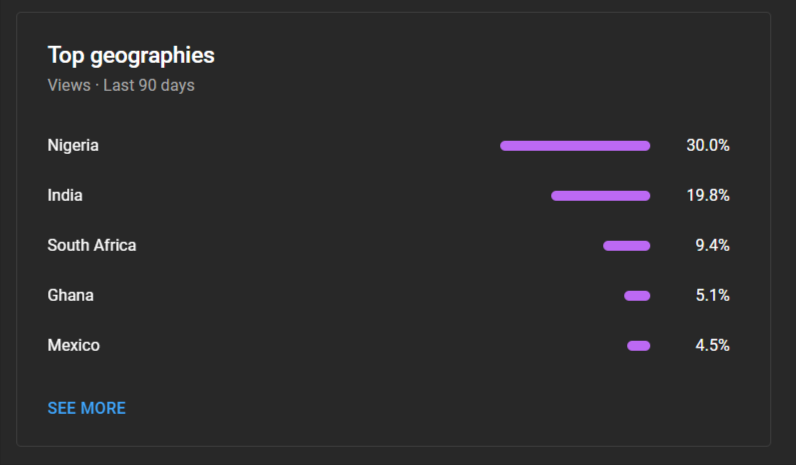Knowing the bit I do about YouTube’s algorithm – which is similar to most social media platform’s – its key goal is to keep viewers on the platform for as much and as long as possible, thus selecting and presenting to users, either on the users’ YouTube.com landing page, search results, or recommended videos (which follows after a video is watched completely by users) what the users’ watch history suggests the user will likely watch.
I am quite intrigued by the data in the screen below detailing the location my videos have been watch from the most for a given period. And some of the questions that arises includes:
- Are people in the top locations, particularly interested in the subject covered in my videos for the period under review?
- Are my videos more attractive/understood by those in those locations?
- Are…
Answers will be tough to come by solely on the strength of this data point. However, combined with other data points, I might reach some valuable conclusions.
That, my friends, is one way to get the most out of raw data. Whilst it is often advised that you determine and track one (or a very small number of) super important metric(s), arriving at that metric, isn’t ever the job of a single data point – or you risk blindsiding yourself and your key stakeholders and inadvertently murdering your product at the alter of vanity metrics.
Thank you for coming to my TEDTalk



